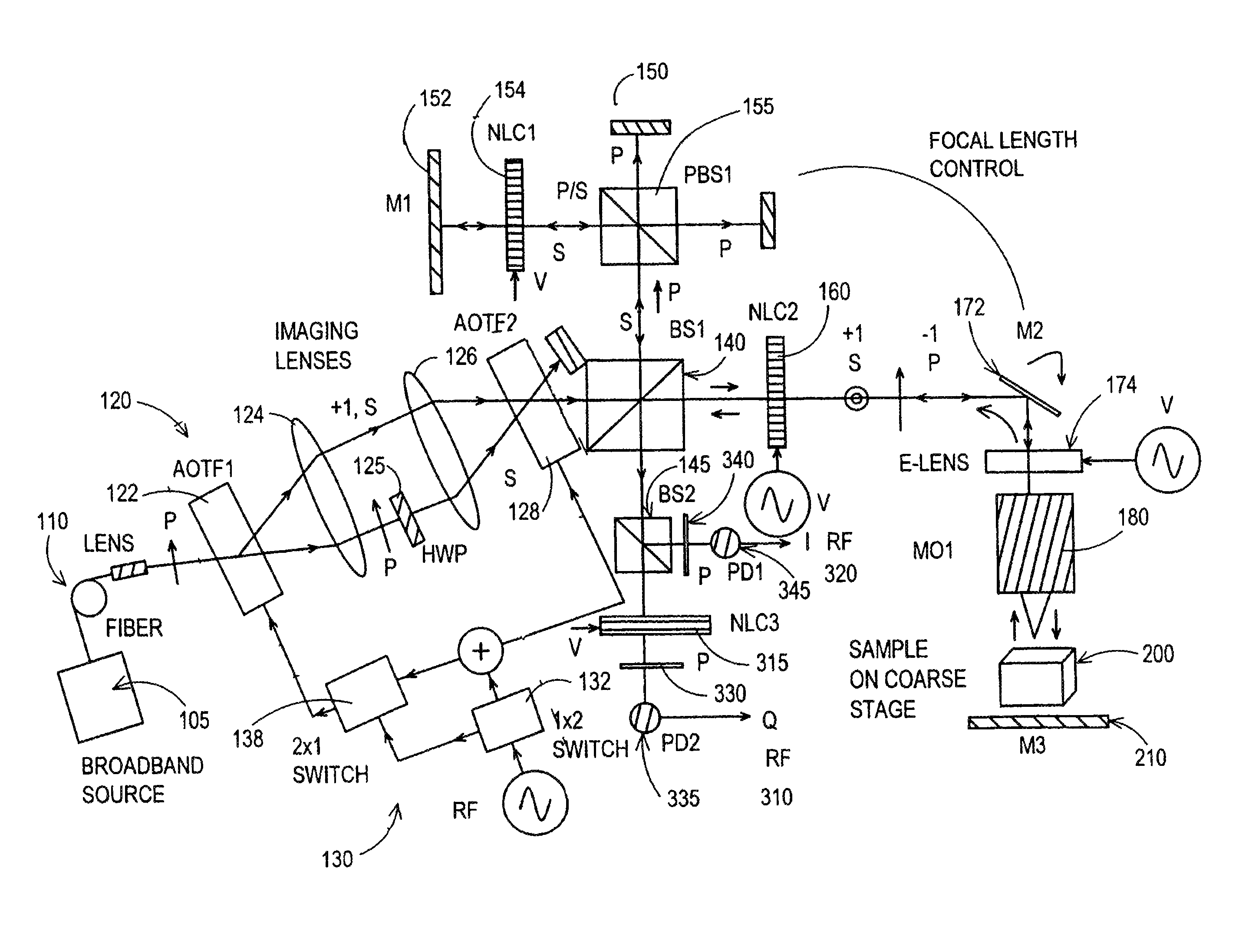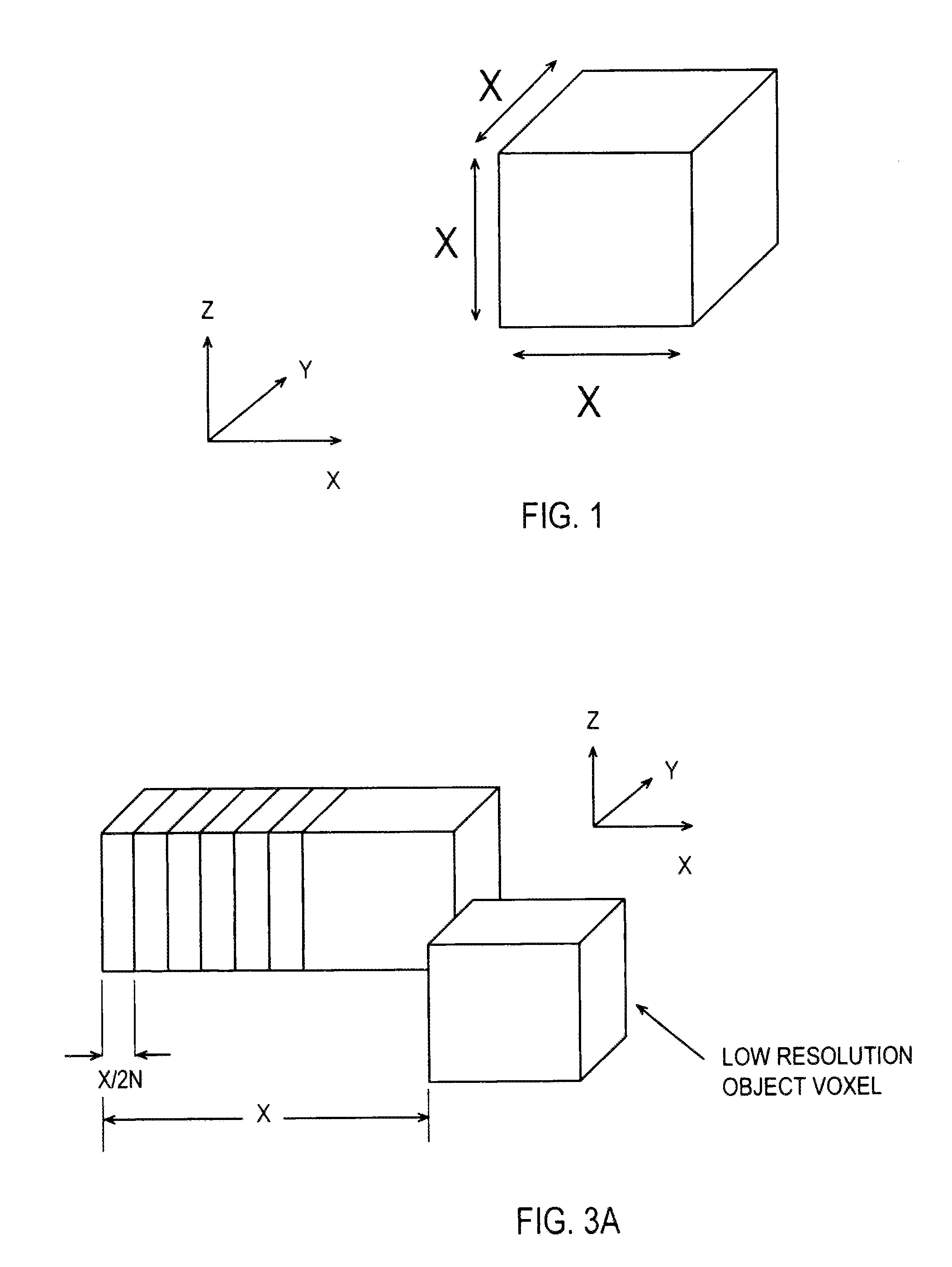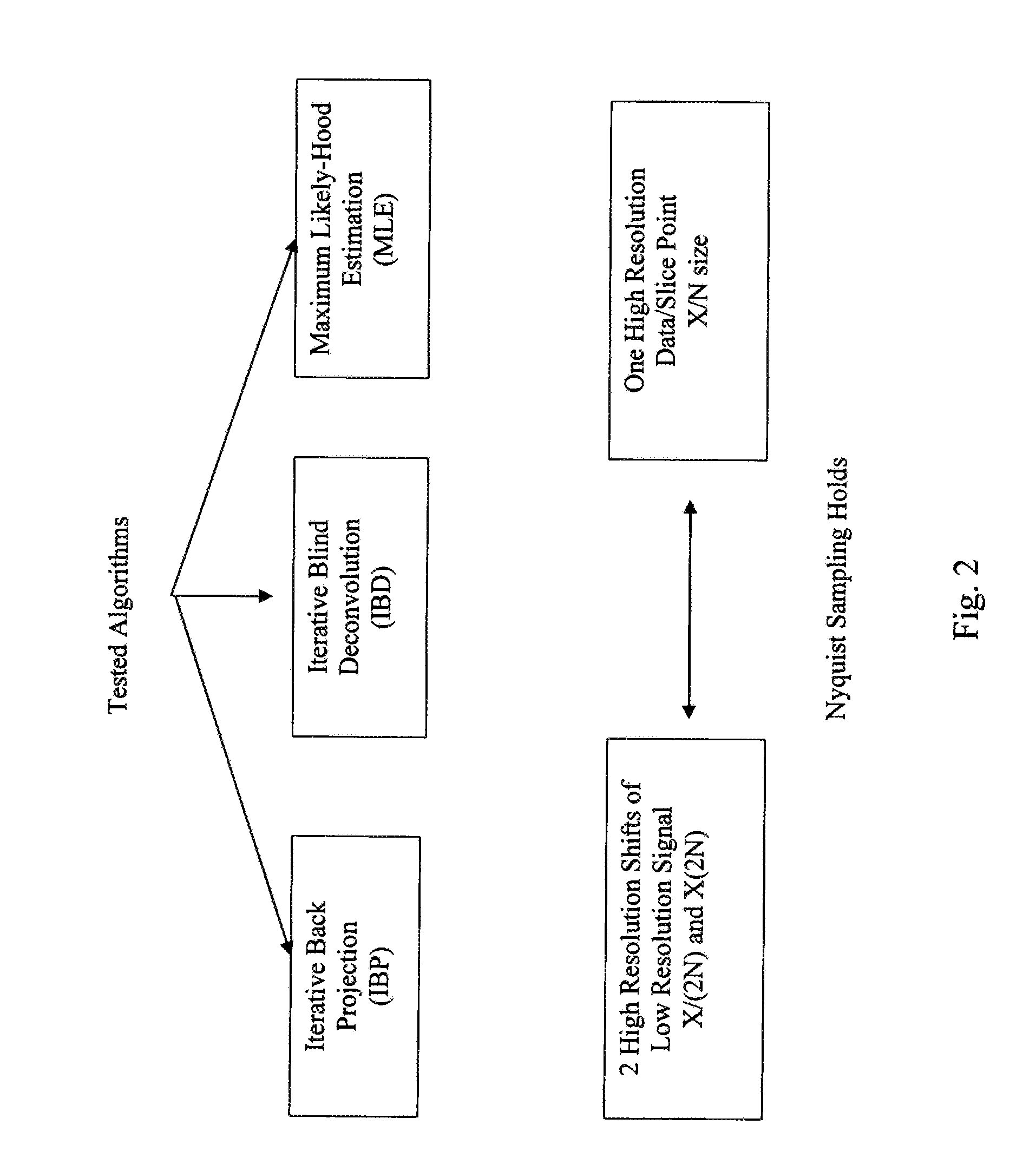Methods and systems for realizing high resolution three-dimensional optical imaging
a three-dimensional, high-resolution technology, applied in the field of signal processing, can solve the problems of large amount of data processing, test object limits the 3-d resolution of the imager, image blurring, etc., and achieve the effect of reducing the detection dynamic rang
- Summary
- Abstract
- Description
- Claims
- Application Information
AI Technical Summary
Benefits of technology
Problems solved by technology
Method used
Image
Examples
Embodiment Construction
[0049]Before explaining the disclosed embodiments of the present invention in detail it is to be understood that the invention is not limited in its application to the details of the particular arrangements shown since the invention is capable of other embodiments. Also, the terminology used herein is for the purpose of description and not of limitation.
[0050]Earlier methods and systems proposed agile confocal microscopy for profilometry and 3-D imaging. The methods, systems and instruments of the present inventions key concept for agile confocal microscopy is to deploy electronically controlled 3-dimensional beam forming optics to steer a light beam in a confocal microscope as described in U.S. Pat. No. 6,687,036 issued Feb. 3, 2004 issued to N. A. Riza a co-inventor of the present invention and assigned to the same assignee which is incorporated herein by reference titled Multiplexed Optical Scanner Technology” and described by the inventor in N. A. Riza and A. Bokhari, “Agile Opt...
PUM
 Login to View More
Login to View More Abstract
Description
Claims
Application Information
 Login to View More
Login to View More - R&D
- Intellectual Property
- Life Sciences
- Materials
- Tech Scout
- Unparalleled Data Quality
- Higher Quality Content
- 60% Fewer Hallucinations
Browse by: Latest US Patents, China's latest patents, Technical Efficacy Thesaurus, Application Domain, Technology Topic, Popular Technical Reports.
© 2025 PatSnap. All rights reserved.Legal|Privacy policy|Modern Slavery Act Transparency Statement|Sitemap|About US| Contact US: help@patsnap.com



